For some time now, once-sacrosanct civil rules in America and throughout the West have been deteriorating. We have elected a showman as president who exudes the mad confidence of a late Roman emperor. Lady Gaga wows an audience of 117 million eager for Super Bowl thrills. Such personalities are creatures of our time and would have been unimaginable just a few decades ago—except perhaps to a few dystopian academics and novelists.
One such scholar was Pitirim Sorokin (1889-1968), who foresaw this deterioration and predicted that it would accelerate far beyond anything Western men and women had seen in their own time. Sorokin, who founded Harvard’s department of sociology in 1930, sketched circumstances in which a functioning society could fall apart and face “disintegration of its moral, legal, and other values which, from within, control and guide the behavior of individuals and groups.” Though far removed from today, Sorokin nevertheless helps explain why so many trendy ideas fall outside the range of reason, and why the bright line between fact and fantasy in private and public affairs seems to be fading.
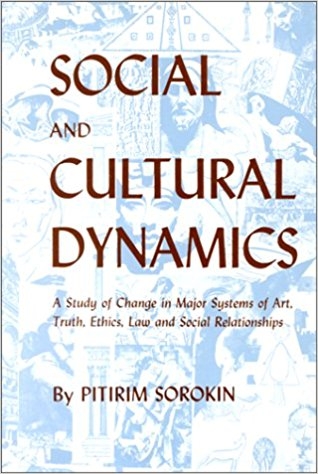 While many living in the West of Sorokin’s day didn’t clearly apprehend what was happening, Sorokin said, they harbored “at least a vague feeling that the issue is not merely that of ‘prosperity,’ or ‘democracy,’ or ‘capitalism’”—in other words, matters handled through normal politics and political action. “The organism of the Western society and culture seems to be undergoing one of the deepest and most significant crises of its life. The crisis is far greater than the ordinary; its depth is unfathomable, its end not yet in sight, and the whole of the Western society is involved in it,” Sorokin wrote in Social and Cultural Dynamics, his 1937 masterwork, whose themes he elaborated upon in subsequent volumes, books and essays.
While many living in the West of Sorokin’s day didn’t clearly apprehend what was happening, Sorokin said, they harbored “at least a vague feeling that the issue is not merely that of ‘prosperity,’ or ‘democracy,’ or ‘capitalism’”—in other words, matters handled through normal politics and political action. “The organism of the Western society and culture seems to be undergoing one of the deepest and most significant crises of its life. The crisis is far greater than the ordinary; its depth is unfathomable, its end not yet in sight, and the whole of the Western society is involved in it,” Sorokin wrote in Social and Cultural Dynamics, his 1937 masterwork, whose themes he elaborated upon in subsequent volumes, books and essays.
World War II deepened Sorokin’s pessimism. In his view the carnage of the Holocaust and Hiroshima, together with the Soviet Union’s murderous aggression in the wake of war, had destroyed the illusion of progress and, after five centuries of Western world leadership, had triggered a fatal loss of societal confidence.
Long before Andy Warhol and Jeff Koons arrived on the cultural scene, Sorokin forecasted that the showy would triumph in arts and entertainment, and what was once revered would be commodified: “Michelangelo and Rembrandts will be decorating soap and razor blades, washing machines and whiskey bottles.” He thought anthropologist Margaret Mead, author of Coming of Age in Samoa (1928), was a sex-obsessed huckster.
Sorokin could be scolding and alarmist when he wrote for the general public. His later criticism and treatises were unduly antagonistic and often hard to follow. By today’s social science standards, his theories are methodologically crude. But a pioneer of social dynamics, and highly intuitive, Sorokin understood what makes societies and cultures tick. His nascent department at Harvard bred many eminent sociologists of the 20th century, including Talcott Parsons, Charles Tilly, and Robert Merton.
Born poor in Russia in 1889, imprisoned by the Czar’s henchmen, and exiled by the Bolsheviks, Sorokin was a very tough nut. In 1917, he was Alexander Kerensky’s secretary before the October Revolution. A traditionalist with little egalitarian sensibility, Sorokin made no friends among Marxist sympathizers in the academic social sciences during his life in U.S. academia, and he remained ardently anti-Soviet during the Cold War. He spent almost four decades at Harvard as a solitary, often embittered luminary in a field moving in directions out of alignment with his own.
Still, in 1965 he was elected president of the American Sociological Association on a write-in ballot, a testament to his stature among established academic sociologists fed up with dogmatic empiricism and positivism, and within a rising generation drawn to Sorokin’s ideas of altruism and love-energy. Two years later, amid rising social disorder, the futurist Herman Kahn and a high-profile commission at the Hudson Institute adapted Sorokin’s model of sensate society to introduce the acclaimed study, The Year 2000.
In Kahn’s view, the United States sat on a societal fault line as a determined civil rights movement and counterculture stood American values on their head. “Some will argue that if an appreciable proportion of society becomes Late Sensate in many aspects of life, the society is likely to become ungovernable,” Kahn warned at the time. Neither Kahn nor Sorokin could foresee technology’s later impact, but they grasped that technological forces could accelerate the arrival of just such an ungovernable society.
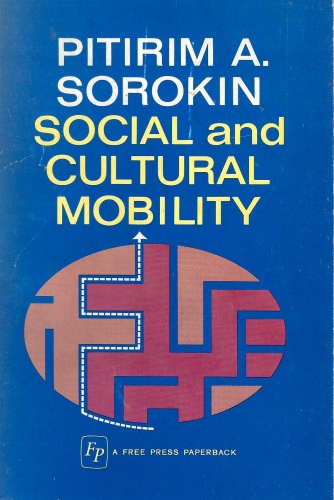 Appealing both to cultural conservatives and New Age spiritualists (Sorokin saw yoga as a means of integrating spirit and intellect), he attracted the attention of Albert Einstein, Herbert Hoover, and John F. Kennedy. His predictive powers were formidable, and contemporary figures took heed. When he died in 1968, he remained an illustrious, well-known figure, and his opinions were widely written about and explored. Since then, however, he has receded from memory.
Appealing both to cultural conservatives and New Age spiritualists (Sorokin saw yoga as a means of integrating spirit and intellect), he attracted the attention of Albert Einstein, Herbert Hoover, and John F. Kennedy. His predictive powers were formidable, and contemporary figures took heed. When he died in 1968, he remained an illustrious, well-known figure, and his opinions were widely written about and explored. Since then, however, he has receded from memory.
As early as the 1920s, Sorokin’s history-based analyses of revolution and social mobility established his reputation. He concluded, reinforced by his own experiences during the Russian Revolution, that the ideals of revolution are seldom realized. An upsurge of inequality, poverty, starvation, and war are more likely. Soon Sorokin began an exhaustive comparative study of art forms, laws, and ethics to develop a theory of cultural cycles based on two social super-systems, the ideational and sensate, a scheme that he would seek to elucidate throughout his long career.
Sorokin rejected both prevailing theories of history—the thesis of “linear” historical progress—and Oswald Spengler’s cyclical metaphysics in The Decline of the West. While the West as it had evolved over 500 years faced social disintegration and “catastrophic transition to a new culture,” the human quest for order and meaning would prevail, leading away from the sensate to a yet indeterminate ideational society. Catharsis, Sorokin said, would follow chaos.
Ideational societies prize faith, revelation, and mystery. They seek the invisible and absolute. They value religious experience, not science or invention. For Christendom in the Middle Ages, the Kingdom of God and the Trinity comprised the ultimate, purest reality. The Tao, stressing the Way of Heaven, embodies the ideational character of ancient China. This mindset is difficult for the contemporary, secularized West to grasp, unlike in Islamic societies, where spiritual power and worldly government are knotted.
In sensate societies, reality is terrestrial. Rules and laws are man-made, not God-given; they are socially constructed and changeable. Such societies view man as the measure of all things. What matters are wealth, comfort, power, fame, and fun. Two consenting adults can do what they want; marriage is a contract to be dissolved at will. Society can be an Ayn Rand-style dream come true, at least on the drawing board.
Sensate societies value the worldly, empirical, and novel. The achievements are impressive, visible in skyscrapers, aviation, nuclear power, and micro-technology. But government, education, industry, technology, and finance depend on elaborate systems, logistics, expertise, and rules to remain operational, if only to preserve accumulated wealth and hard-won fortunes. This scale and complexity make institutions both fragile and inflexible. Externalities such as the possibility of climate change loom as terrifying black swans.
Between the ideational and sensate, as a mezzanine in Sorokin’s design, lie idealistic or integrated societies, when the worldly and the transcendent nourish one another. As examples, Sorokin pointed to 5th-century Greece and 13th-century Europe, to Brahmanism in India, and to the creative genius of Mozart and Beethoven. Sorokin spent the last 20 years of his life promoting such aesthetics and such a society through an independent center at Harvard funded by Eli Lilly, the pharmaceutical heir and a Sorokin friend.
As sensate societies disintegrate, Sorokin argued, aggressive individualism and free will undermine self-restraint and enterprise. (Daniel Bell explored this proposition brilliantly in his 1976 book, The Cultural Contradictions of Capitalism.) The needs for novelty, stimulation, and pleasure prove insatiable. Rules and traditions appear arbitrary, something to resist or ridicule, not to venerate or abide, as they interfere with self-expression. Boredom feeds discontent and extremism. Activities once considered shameful, criminal, or insane are permitted.

In such eras—Sorokin pointed to 3rd century Rome and the 20th century West—societies experience increasing wars, crime, and depravity. Luxury and ease add fuel to the fire. When chaos is ascendant and apparent, governments seize the opportunity to expand control over society, claiming emergencies. Public officials resort to deception and coercion. Declarations of equal rights and social injustice become smokescreens for unadulterated force. The result often is curtailed individual autonomy, decreased freedom, increased regimentation, and weakened constitutional and democratic institutions.
And what accompanies these developments? The public mood shifts from enterprising and community-minded to egotistical: what we call narcissistic today. Freed of moral and legal constraints, political society reveals “a human animal driven mainly by his biological urges, passions, lust,” in Sorokin’s words. Some individuals fight back, but others, paralyzed with fear or fatigued by circumstances, give up. Suicide, mental disease, and crime escalate. Judeo-Christian religion, seen as a historical relic, converts itself into a political agency, depriving the perplexed of divine solace.
Sorokin’s critique of private life begins with the disintegration of the family. “Divorces and separations will increase until any profound difference between socially sanctioned marriages and illicit sex-relationship disappears,” he predicted in the final volume of Social and Cultural Dynamics. Children born out of wedlock and separated from parents would become unexceptional.
In the 1950s he foresaw the coming sexual anarchy of the West and its downside. Alfred Kinsey’s widely publicized research, the newly founded Playboy magazine’s explicit carnal appeal, the Elvis Presley delirium among adolescents, the runaway commercial success of Peyton Place, the critical success of Tennessee Williams’s Cat on a Hot Tin Roof and Vladimir Nabokov’s Lolita—all were parts of a piece at mid-century. In 1957 Sorokin wrote crabbily, “Americans are victims of a sex mania as malign as cancer and as socially menacing as communism.” This overreach got him ridiculed in the movie Gidget, cartooned in The San Francisco Chronicle, and called a publicity hound and prude.
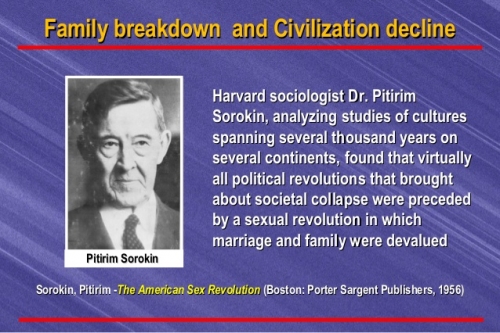
What Sorokin saw dawning is now at full noon. The edgy and sordid are box office. Hot porn is just a click away. Casual sex is the norm. Ten or twenty sexualities clamor for a spotlight. Real or not, it doesn’t matter. Hopes and dreams crowd out what is possible and what can be done. The pursuit of pleasure—Neil Postman called it amusing ourselves to death—looks as if it might be a terminal social disease. In the Western world marriage loses its appeal. The idea of family formation changes shape, resulting in social conditions in which 40 percent of U.S. children today are born to unmarried women. These sexualities bear legal rights and popular favor perhaps unique in human history.
Late Sensate license—if it feels good, do it—has become its own faith. Facts, reason, and logic are losing their universal public authority, even in academic life. Despite astonishing affluence and material ease, some one-sixth of Americans over the age of fifteen are taking prescribed anti-depressants. Others are reaching for whiskey, marijuana, opioids, and other palliatives. The Late Sensate does not appear to be working too well psychologically, and governability is at issue. Sorokin’s advice to perplexed or anxious individuals facing social turmoil was to focus on the transcendent through the humanities. Plant a garden. Go walking. Respect the natural environment. Practice yoga. Live simply. Turn off the television set and talk to others.
More than fifty years later, this is not unwise advice. “Only the power of unbounded love…can prevent the pending extermination of man by man on this planet,” Sorokin expounded. “Without love, no armament, no war, no diplomatic machinations, no coercive police force, no school education, no economic or political measures, not even hydrogen bombs can prevent the pending catastrophe.” Sorokin’s prescriptions of altruism and universalism might seem painfully naïve and anodyne today. But this difficult, intuitive man’s clear-eyed premonitions, his studies of social dynamics, and his tough-minded benevolence remain remarkable guides to considering current events.
Gilbert T. Sewall is co-author of After Hiroshima: The United States Since 1945 and editor of The Eighties: A Reader.



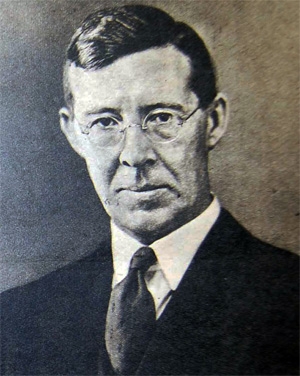

 del.icio.us
del.icio.us
 Digg
Digg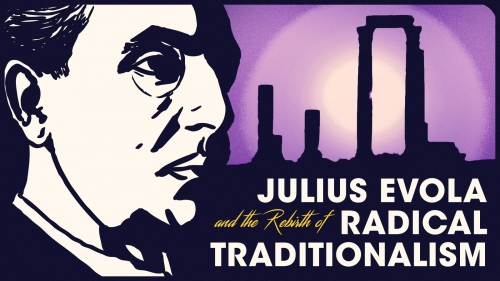

 Ludwig Klages est né à Hanovre le 10 décembre 1872. Après des études de physique-chimie, de psychologie et de philosophie, il va fonder en compagnie du sculpteur Hans Busse et Georg Meyer l’Association allemande de graphologie en 1884. Klages sera d’ailleurs mondialement connu pour son travail sur la caractérologie. Son œuvre comporte une part philosophique importante, nourrie de la pensée de Bergson, de Bachofen et de la Lebensphilosophie de Nietzsche. À notre plus grand regret, l’ouvrage capital de Ludwig Klages, Geist als Widersacher der Seele (« L’esprit comme antagoniste de l’âme ») n’est pas pour l’heure disponible en français. Gilbert Merlio nous en résume la ligne directrice dans la préface de l’édition française de Mensch und Erde de Ludwig Klages : « Au logocentrisme triomphant depuis les Lumières, il y oppose son “ biocentrisme ” ou son panvitalisme. Comme tout bon philosophe de la vie, il part de l’opposition entre l’esprit et la vie. Mais il la formule autrement : l’âme est ce qui relie l’homme au macrocosme et lui donne accès à des expériences et des visions archétypales. L’esprit est une conscience de soi “ acosmique ” et au service exclusif d’une volonté qui cherche à façonner la réalité à son image. Comme Spengler au sein de ses “ hautes cultures ”, Klages voit à l’œuvre dans l’histoire une sorte de “ dialectique de la raison ”. Les grandes civilisations naissent de la collaboration de l’âme et de l’esprit. Mais lorsque l’esprit s’émancipe, son action réifiante, qui ne conçoit la nature que comme une matière rationnellement exploitable, coupe l’homme de ses racines cosmiques et devient dangereuse pour l’humanité. C’est ce qui se passe dans la civilisation industrielle moderne (pp. 10-11). »
Ludwig Klages est né à Hanovre le 10 décembre 1872. Après des études de physique-chimie, de psychologie et de philosophie, il va fonder en compagnie du sculpteur Hans Busse et Georg Meyer l’Association allemande de graphologie en 1884. Klages sera d’ailleurs mondialement connu pour son travail sur la caractérologie. Son œuvre comporte une part philosophique importante, nourrie de la pensée de Bergson, de Bachofen et de la Lebensphilosophie de Nietzsche. À notre plus grand regret, l’ouvrage capital de Ludwig Klages, Geist als Widersacher der Seele (« L’esprit comme antagoniste de l’âme ») n’est pas pour l’heure disponible en français. Gilbert Merlio nous en résume la ligne directrice dans la préface de l’édition française de Mensch und Erde de Ludwig Klages : « Au logocentrisme triomphant depuis les Lumières, il y oppose son “ biocentrisme ” ou son panvitalisme. Comme tout bon philosophe de la vie, il part de l’opposition entre l’esprit et la vie. Mais il la formule autrement : l’âme est ce qui relie l’homme au macrocosme et lui donne accès à des expériences et des visions archétypales. L’esprit est une conscience de soi “ acosmique ” et au service exclusif d’une volonté qui cherche à façonner la réalité à son image. Comme Spengler au sein de ses “ hautes cultures ”, Klages voit à l’œuvre dans l’histoire une sorte de “ dialectique de la raison ”. Les grandes civilisations naissent de la collaboration de l’âme et de l’esprit. Mais lorsque l’esprit s’émancipe, son action réifiante, qui ne conçoit la nature que comme une matière rationnellement exploitable, coupe l’homme de ses racines cosmiques et devient dangereuse pour l’humanité. C’est ce qui se passe dans la civilisation industrielle moderne (pp. 10-11). »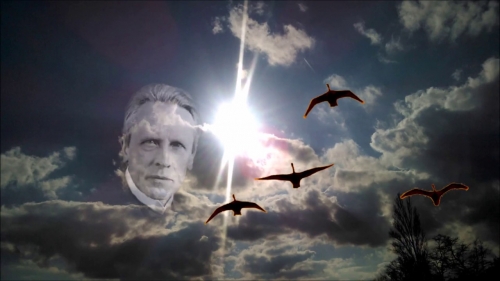
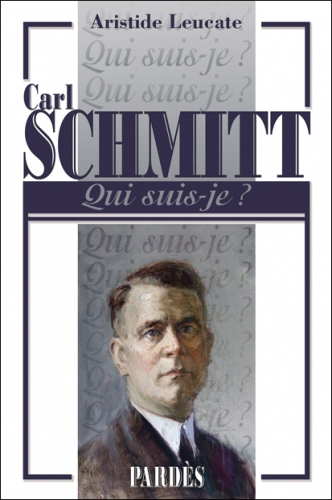
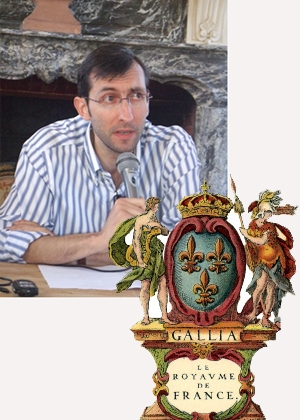 Aristide Leucate propose surtout la biographie intellectuelle d’un des plus grands penseurs du XXe siècle. Juriste de formation, universitaire de haut vol, Carl Schmitt est un Prussien de l’Ouest en référence à ces terres rhénanes remises à la Prusse par le traité de Vienne en 1814 – 1815. Francophone et latiniste, ce catholique intransigeant admira toujours l’Espagne et tout particulièrement son Âge d’Or. Il n’est pas fortuit si sa fille unique, Amina, épousa en 1957 un professeur de droit de nationalité espagnole, ancien membre de la Phalange, Alfonso Otero Varela. Ses quatre petits-enfants sont donc des citoyens espagnols.
Aristide Leucate propose surtout la biographie intellectuelle d’un des plus grands penseurs du XXe siècle. Juriste de formation, universitaire de haut vol, Carl Schmitt est un Prussien de l’Ouest en référence à ces terres rhénanes remises à la Prusse par le traité de Vienne en 1814 – 1815. Francophone et latiniste, ce catholique intransigeant admira toujours l’Espagne et tout particulièrement son Âge d’Or. Il n’est pas fortuit si sa fille unique, Amina, épousa en 1957 un professeur de droit de nationalité espagnole, ancien membre de la Phalange, Alfonso Otero Varela. Ses quatre petits-enfants sont donc des citoyens espagnols.